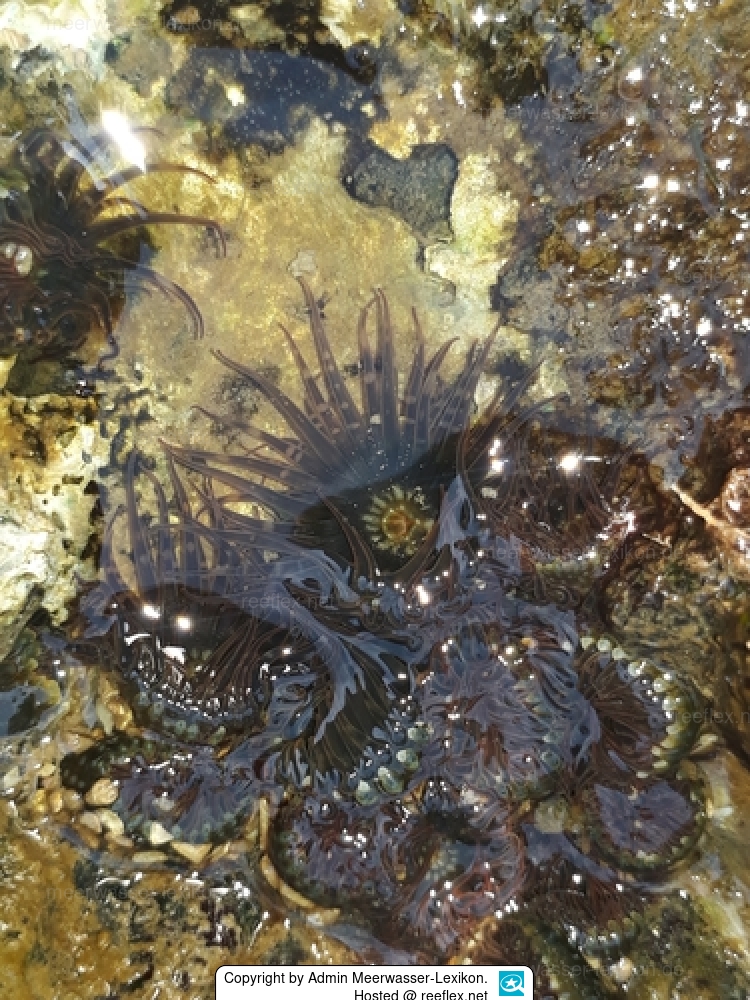Info
Anthopleura handi is often observed attached to a fixed object such as a mollusk shell (e.g., oyster shells), rocks, or mangrove tree roots, typically attached high in the intertidal zone.
However, the sea anemone may also be located in sediment such as sand or mud.
Since the animal has no zooxanthellae, it must derive its life energy from catching zooplankton and other invertebrates.
Not a symbiotic anemone and not suitable for aquariums.
However, the sea anemone may also be located in sediment such as sand or mud.
Since the animal has no zooxanthellae, it must derive its life energy from catching zooplankton and other invertebrates.
Not a symbiotic anemone and not suitable for aquariums.







 Admin Meerwasser-Lexikon
Admin Meerwasser-Lexikon






















